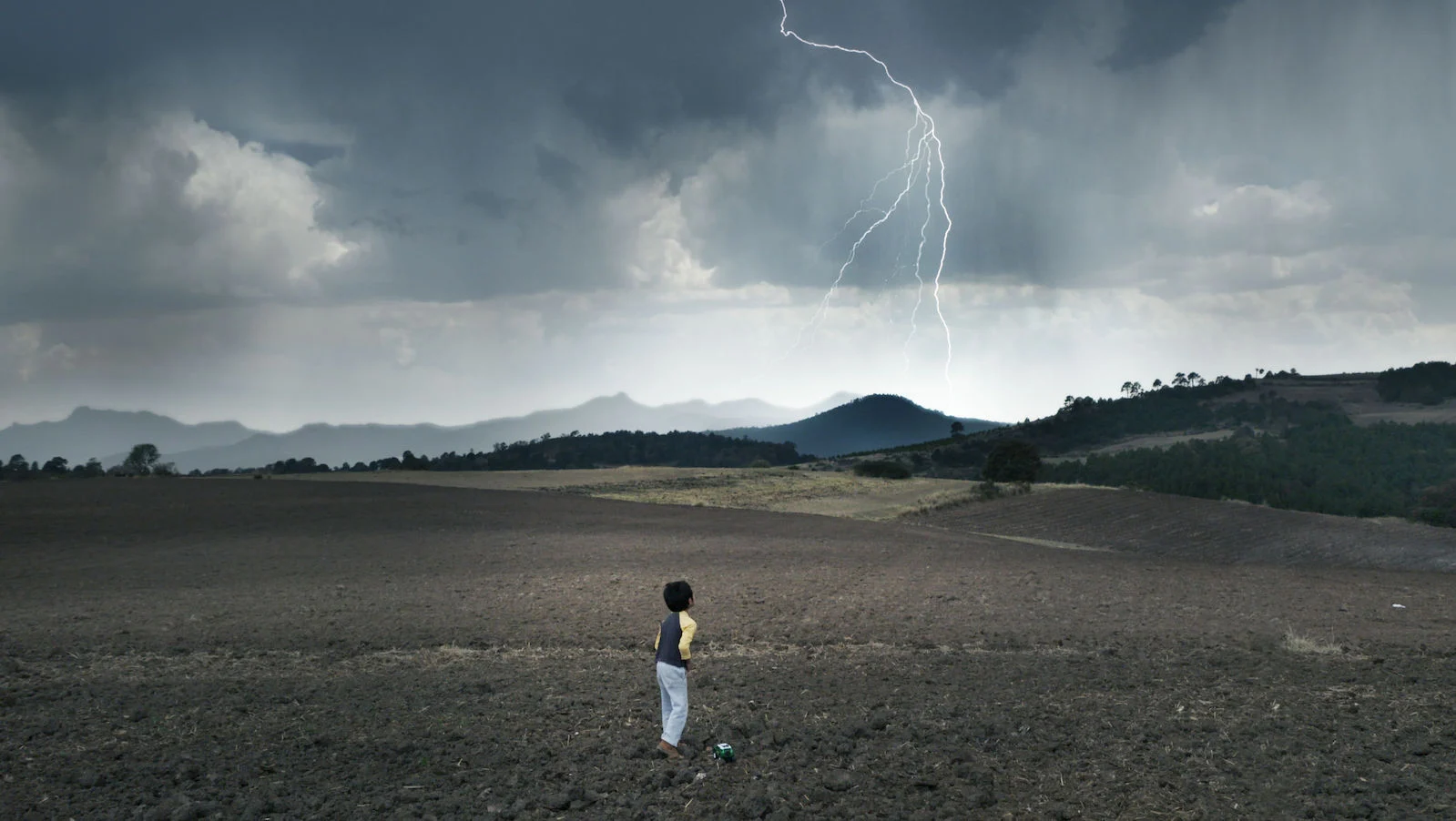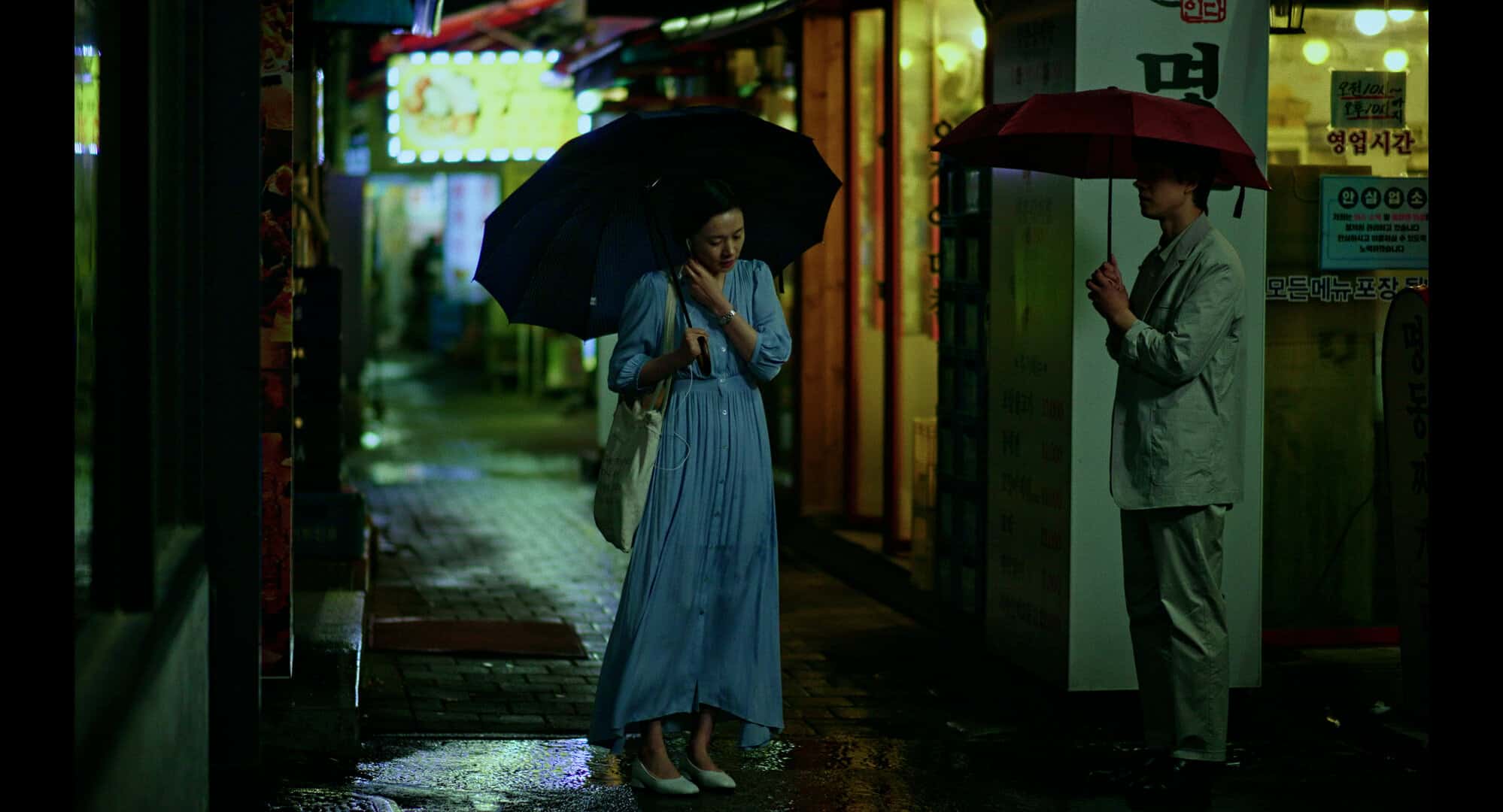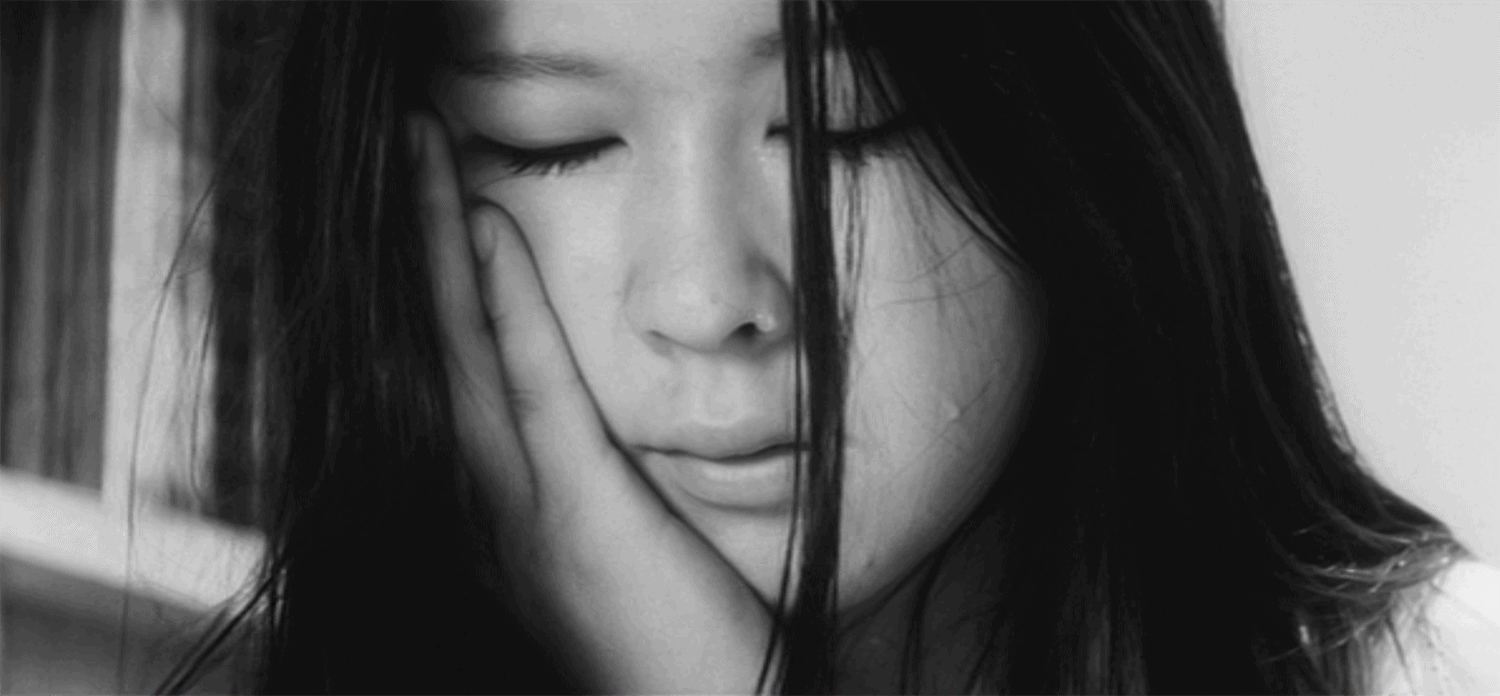If “Past Lives” asks what it means to move on, “Mimang” asks what it means to linger. In Kim Tae-yang's melancholic debut feature, “Mimang” follows three encounters, starring a film curator (Lee Myung-ha) and an artist (Ha Seong-guk) as they walk through the centuries-old streets of center Seoul in different points of time of their lives. Together, along with some others, they reflect upon all that had passed, and all that could have been.
We got the chance to speak to the director, Kim Tae-yang, over Zoom on the occasion of the Museum of the Moving Image's 2024 edition of First Look. Between his two cats, we talked about walking down memory lane, hiding behind trees, and the meticulous preparation necessary to shoot on-location.
Mimang is screening at the Museum of Moving Image, as part of the First Look 2024 program

This interview has been edited and redacted for clarity, and has been translated directly from Korean.
How did “Mimang” come to be?
Kim Tae-yang: In the same way the movie opens with Ha Seong-guk meeting Lee Myung-ha in the summer of 2019, I met Lee Myung-ha on that same street. I was on my way to art class, which I enrolled in at the time as a hobby. She tapped me on the shoulder and said, “It's been a while. I'm on my way to the Seoul Cinema, but I don't know where it is. Do you?”
We had already known each other as friends, but we hadn't seen each other in a while. So I took her there and we caught up. When we left, she said, “Oh, let's work together on a creative project next time.” That night, I wrote the script. I directed the movie from there.
And the second guy?
At first, I just wanted to shoot the first part as a short. Afterwards, though, I began to wonder: what happened to them afterwards? I could see all these ideas come forward the night we finished shooting.
Was the title always “Mimang?”
At first, the project was untitled. I was just shooting part by part. One day, I watched Bam Nam-ok's “Mimangin” (1955), which translates into “The Widow” – or that is, a woman who couldn't follow her husband to the death. I was shocked by this. I began to wonder, then, what would “Mimang” mean without “in”? [In Korean, the Sino-Korean word “인,” pronounced as “in”, refers to “person”.] So I looked up [the word ‘Mimang' without ‘in'], and found all these different meanings. I decided to divvy up the parts from there. The meanings began to layer themselves from there.
The intertitles are also beautifully done, and I found the English subtitles to be wonderfully accurate, too.
I worked with a friend, Mark, to figure out the nuances between Korean to English. I'm glad to hear that the meanings carried over well.
Let's talk about location. So much of the film is reliant on its setting in Gwanghwamun, the historic center of Seoul. Are you from around there?
I'm actually from a small place in the countryside near Jiri Mountain. I came to Seoul for university. The longer I stayed in Seoul, the more I felt like Gwanghwamun was a microcosm of the city. It has all the contemporary and historical buildings, sure, but also all the districts that are rapidly changing. I thought I should film this place before we lose it all. I wanted to preserve what I found beautiful about the city.
The places that you chose – like Euljiro 3-ga or Jonggak – are not exactly what comes to mind when one thinks of center Seoul, compared to the palaces and other historic landmarks.
Well, I did want to preserve the street where I met Lee Myung-hwa. I had no desire to film famous places, but instead I wanted to show the places where people live and walk. I guess there is the Yi Sun-sin statue in Gwanghwamun to ground the narrative. It's about the day-to-day, not about the flashy landmarks.
These neighborhoods are also notoriously quickly gentrifying.
I am also interested in gentrification. The two protagonists are walking along a street that's constantly under construction in the background. Things keep coming down or getting built up in the background; the streets contrast between night and day. The characters walk down memory lane together and part, marking the passage of time.
Right, is Seoul Cinema still around?
No, it actually shut down during the COVID-19 pandemic. In Part II, we fantasize about the Seoul Cinema coming to life again. We had to shoot this part in 2022, compared to our earlier footage from 2019. This film took 4 years because we didn't have the permissions to film due to COVID-19.
And the characters' final destination? Is it a real place?
Yes, it's a real café. It's very small, and only fits 3-4 people. It doesn't even come out on the maps. Just like the movie, the place is called “Tiny Lane Café.” It's tucked away in an alleyway around Gwanghwamun, and I stumbled upon it one day during the days I took my art class. It's a place where office workers come by to blow off steam for a drink or two after work, or to play the guitar every now and then. The real manager of the house is also a woman, but the one portrayed in the movie is an actress.

“Mimang” is also heavily invested in the art of conversation, a la Hong Sang-soo or Richard Linklater, or more recently, Celine Song.
I'm sure the other directors had their own reasons to shoot their films the way they did. For me, in addition to the reasons previously mentioned, I wanted to shoot outdoors. Since this is an independent feature, we didn't have the budget to create my own sets or hire a lot of actors. I also didn't want to just set the camera up at an angle and shoot the actors in close-up. Shooting outdoors also adds a note of authenticity, and a moving camera with long shots, walking actors, would also fit the story. This also gives the characters a sense of orientation in relation to the [Yi Sun-sin] bronze statue.
Shooting on-location comes with its own challenges though – such as finding a film permit or dealing with pedestrians.
The city of Seoul gave us permission, and we had an agreement with all the businesses that appeared in the film. We also tried to film strategically. When we wanted more people in the shot, we would go when the street was busier. When we wanted less, we would schedule a shoot that would have less foot traffic.
It's also almost impossible to avoid passerby. We tried to mitigate this through different things. Setting up the camera far away and strategically cutting, for example, made it easier to maintain a sense of continuity between shots. We also asked for help from the public. We had staff hiding behind trees to tell pedestrians that we were shooting an independent film, and that we would appreciate it if they didn't make eye contact with the camera. If passerby were uncomfortable with appearing in the film, we asked them to wait a few minutes until we finished the shot before moving forward.
Check the review of the film
Was the script adlibbed at all? How did you deal with the unexpected?
No, it was all pre-written. We did a lot of rehearsals while walking, sans camera. Since we had a few long takes – especially on these public streets – we needed everything to be perfect. In the case that there was an unexpected occurrence, like a particularly strong gust of wind or a loud motorcycle zipping by, I asked the actors to take it with grace. I think this is why it looks so natural.
Finally: do you have a favorite memory on-set?
I didn't plan to shoot in the rain. However, when we finalized our shooting schedule, we learned about a typhoon forecast. But typhoons are so unpredictable; sometimes it rains, sometimes it doesn't. So we prepared two scripts – one in case it rains and one in case it doesn't – for Part I. For the rainy script, for example, we added in the choreography with opening an umbrella. Incidentally, we had another rain forecast when we were shooting Part II. We decided to select a rainy day on purpose to create a mirroring effect for Part I. In Part III, we created a few falling raindrops to speak to the earlier aspects of the movie. We were able to make the most out of the unexpected!
“Mimang” will have its New York Premiere at the Museum of the Moving Image in New York, NY on Sunday, 17 March, 2024. You can find tickets here.















